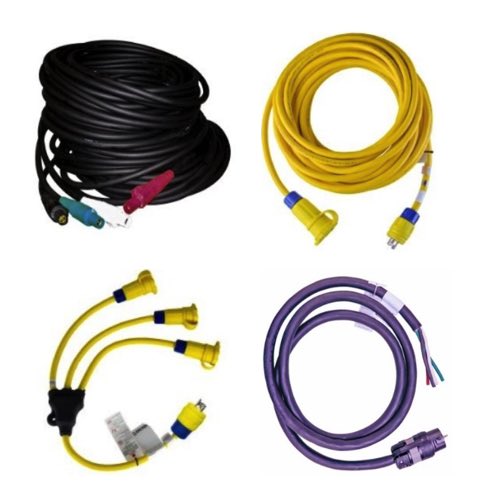Cordsets

Cordsets are essential components for supplying electrical power to a wide range of industrial, commercial, and automation equipment. A cordset typically consists of an electrical plug, a flexible cable, and a connector designed to mate with a device or power inlet. These assemblies are engineered to safely and reliably deliver electrical current from a power source, extension cord, or distribution system to connected equipment.
RSP Supply carries a full line of Ericson industrial and commercial cordsets designed for use in demanding environments. These cordsets are commonly used with machinery, material handling equipment, sensors, actuators, and other electric-powered devices. Available in various voltage ratings, current capacities, and connector configurations, cordsets provide dependable performance across a wide range of applications.
Cordsets are manufactured using different conductor insulation and jacket materials such as rubber, PVC, or textile-reinforced coverings. These materials help protect against abrasion, moisture, temperature extremes, and environmental exposure. Selecting the appropriate insulation and jacket type ensures long service life and reliable operation, whether the cordset is used indoors or in more challenging industrial settings.
FAQs
Q: What are cordsets used for?
Cordsets are used to connect electrical devices and equipment to a power source, allowing safe and reliable delivery of electricity in industrial, commercial, and automation applications.
Q: What voltage and load ratings are available for cordsets?
Cordsets are available in a wide range of voltage and current ratings to match specific equipment requirements, from low-power devices to higher-load industrial applications.
Q: What are typical standard and custom lengths for cordsets?
Standard cordset lengths commonly range from 1 to 10 meters, while custom lengths can be specified for longer runs or specialized installations, depending on application needs.
Q: What is the industry standard for male and female connectors on cordsets?
The industry standard typically follows IEC 60320 conventions, where male connectors have pins and female connectors have sockets to ensure safe and consistent connections.
Q: What jacket materials are used for industrial cordsets?
Industrial cordsets may use jacket materials such as rubber, PVC, or reinforced textiles to provide protection against wear, moisture, and environmental exposure.
Why Buy Cordsets from RSP Supply
RSP Supply offers a reliable selection of industrial and commercial cordsets from trusted manufacturers such as Ericson. Our inventory includes multiple configurations, load ratings, and voltage options to support a wide range of electrical applications. Customers rely on RSP Supply for technical expertise, consistent product quality, and cordset solutions designed to perform reliably in demanding environments.

